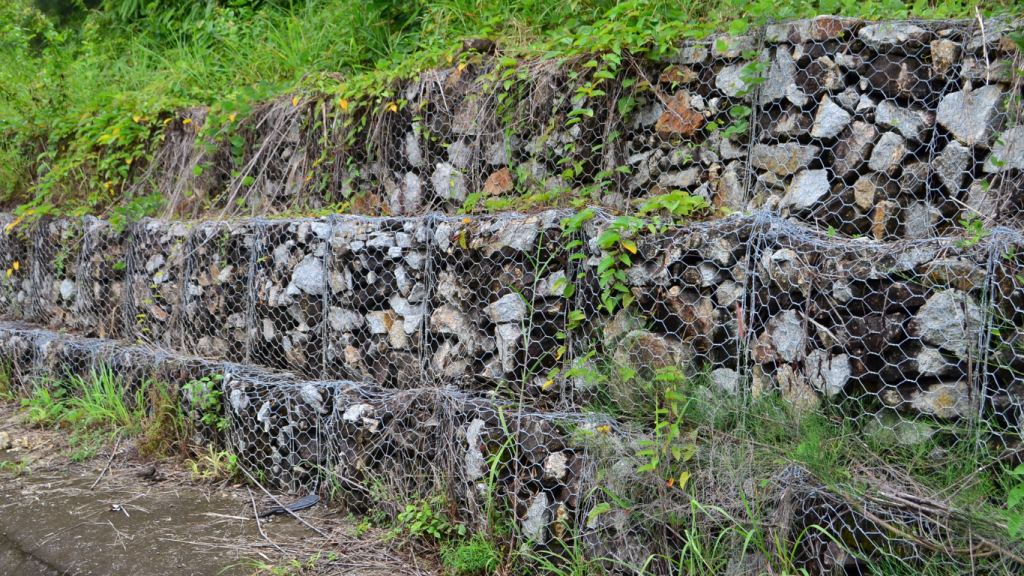Building gabion walls is an effective way to prevent soil erosion and protect against landslides. Gabion walls are structures made of wire mesh cages filled with rocks, stones, or other materials. These walls can provide stability to slopes and prevent soil from collapsing. This article will guide you through the process of building gabion cages using spirals, discussing various methods to construct gabion walls, and addressing common questions related to this DIY project.
Introduction to Gabion Walls.
Gabion walls are increasingly used in civil engineering and landscaping due to their durability and effectiveness. They can be constructed in various shapes and sizes, depending on the application. The primary purpose of gabion walls is to manage water runoff, reduce soil erosion, and create a barrier against landslides. By using spirals in the construction of gabion cages, we can enhance their structural integrity and stability.
Benefits of Gabion Walls.
- Erosion Control: Gabion walls effectively hold back soil, reducing the risk of erosion.
- Cost-Effective: They are often less expensive than traditional retaining walls, as they can be built using locally sourced materials.
- Environmental Compatibility: Gabions allow for vegetation growth, promoting natural habitats.
- Flexibility: Gabion structures can be modified easily based on site requirements.
Materials Needed.
Before starting your gabion wall project, gather the following materials:
- Wire Mesh: Use galvanized steel or stainless steel mesh for durability.
- Spiral Wire: This will be used to secure the gabion cages.
- Filling Material: Choose durable rocks, stones, or recycled concrete.
- Tools: Wire cutters, pliers, a shovel, and gloves.
Method 1: Basic Gabion Cage Construction.
Step 1: Design Your Gabion Wall.
Begin by determining the location and size of your gabion wall. Sketch a design that includes the height, width, and length of the wall.
Step 2: Cut the Wire Mesh.
Using wire cutters, cut the wire mesh to the desired dimensions for your gabion cage. Ensure the pieces are large enough to hold the filling material securely.
Step 3: Form the Gabion Cage.
- Create the Base: Form the base of the cage by bending the wire mesh into a rectangular shape.
- Use Spiral Wire: Secure the corners with spiral wire, twisting it tightly to hold the structure together.
Step 4: Fill the Cage.
Fill the cage with stones, ensuring to distribute the material evenly. Use larger rocks at the bottom for stability, and smaller ones on top.
Step 5: Secure the Top.
Once filled, secure the top of the cage using spiral wire to prevent the materials from spilling out.

Method 2: Stacked Gabion Wall.
Step 1: Prepare the Site.
Clear the area where the gabion wall will be built. Level the ground to provide a stable foundation.
Step 2: Construct the First Layer.
Follow the basic gabion cage construction steps to create the first layer. Ensure it is level and stable.
Step 3: Stack Additional Layers.
Repeat the cage construction for additional layers. Use spiral wire to connect the layers securely, ensuring the wall retains its shape.
Step 4: Backfill.
After stacking, backfill the area behind the gabion wall with soil. This will help provide additional support and stability to the structure.
Method 3: Curved Gabion Wall.
Step 1: Design the Curve.
Determine the radius and curvature of your gabion wall. A curved wall can be more aesthetically pleasing and effective in managing water runoff.
Step 2: Construct the Curved Cages.
- Cut the Wire Mesh: Cut the wire mesh into sections that can be bent into the desired shape.
- Form the Cages: Create individual cages, bending the wire mesh to form the curve.
Step 3: Secure with Spirals.
Use spiral wire to secure the joints between the curved cages. This will prevent gaps and ensure the integrity of the wall.
Step 4: Fill and Compact.
Fill the cages with stones, ensuring they are compacted well to provide maximum support. The curvature will help distribute pressure more evenly.
Tips for Success:
- Use Quality Materials: Always opt for high-quality wire mesh and filling materials to ensure longevity.
- Plan for Drainage: Include drainage solutions such as weep holes to prevent water buildup behind the wall.
- Regular Maintenance: Inspect the wall periodically for any signs of shifting or erosion.
Conclusion.
Building gabion walls using spirals is a practical and efficient way to protect against landslides and erosion. By following the methods outlined in this article, you can create sturdy and attractive structures that serve both functional and aesthetic purposes.
Frequently Asked Questions:
- What is the lifespan of a gabion wall?
- Gabion walls can last for several decades if constructed with quality materials and maintained properly.
- Can I use recycled materials for filling?
- Yes, using recycled concrete or stones is a sustainable option for filling gabion cages.
- How do I ensure proper drainage behind the gabion wall?
- Incorporate weep holes or gravel backfill to facilitate water drainage and prevent hydrostatic pressure buildup.
- Is it necessary to use spiral wire?
- While not mandatory, spiral wire enhances the structural integrity and stability of the gabion cages.
- Are gabion walls environmentally friendly?
- Yes, they are environmentally friendly as they allow for vegetation growth and blend well with natural landscapes.
